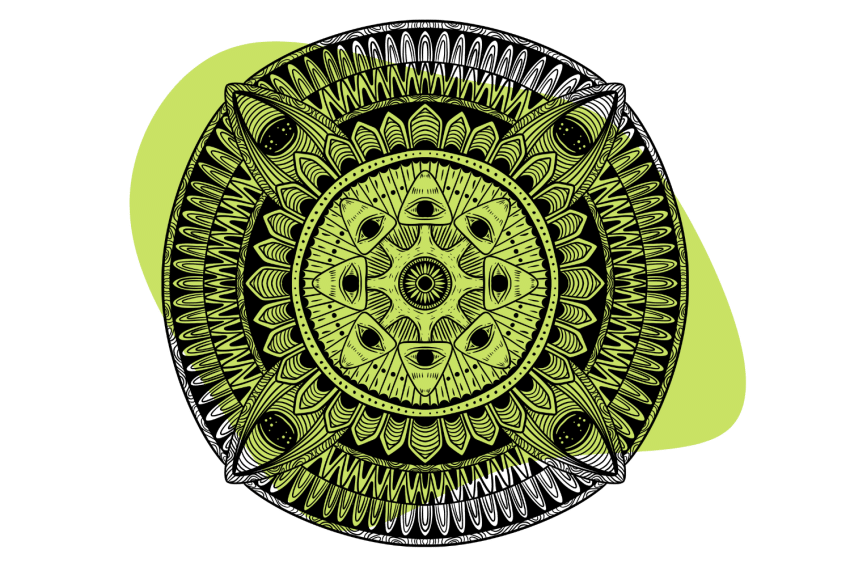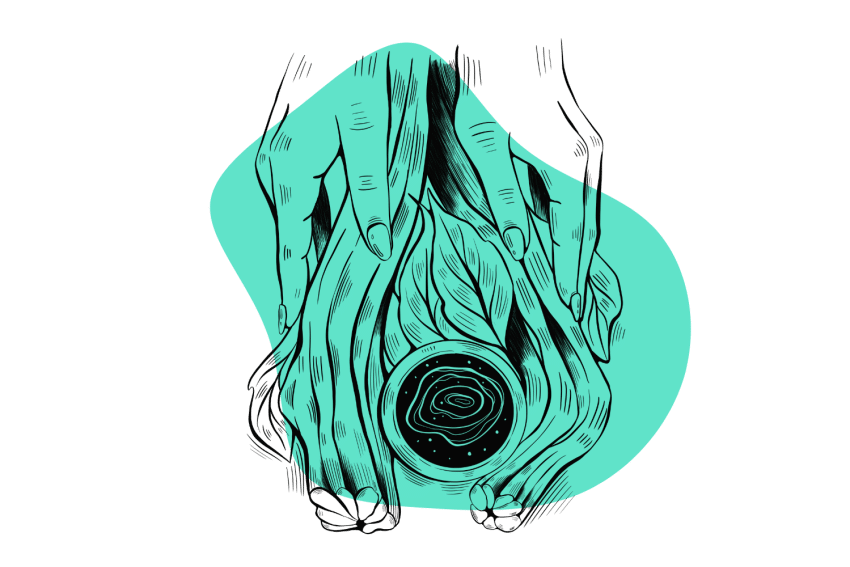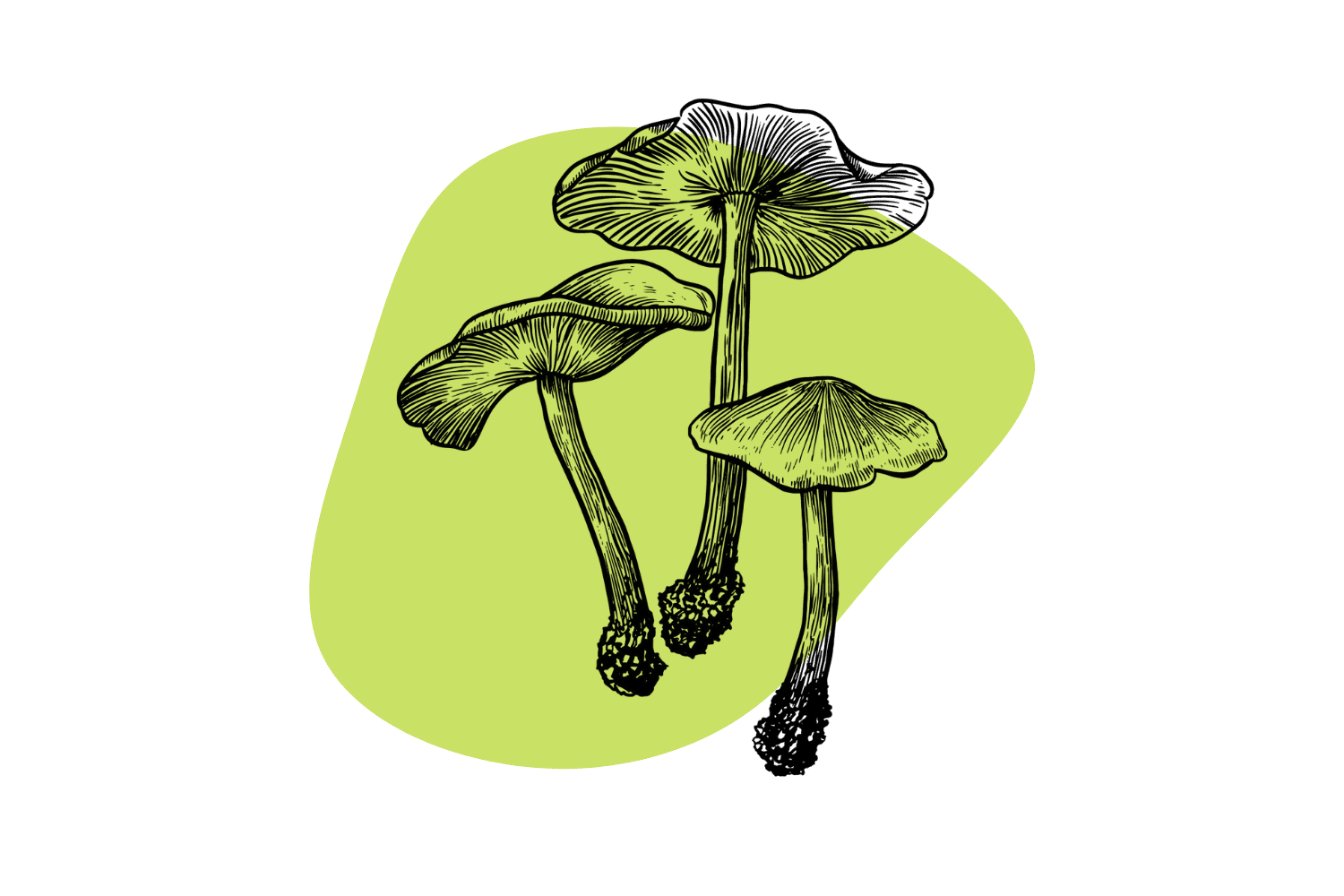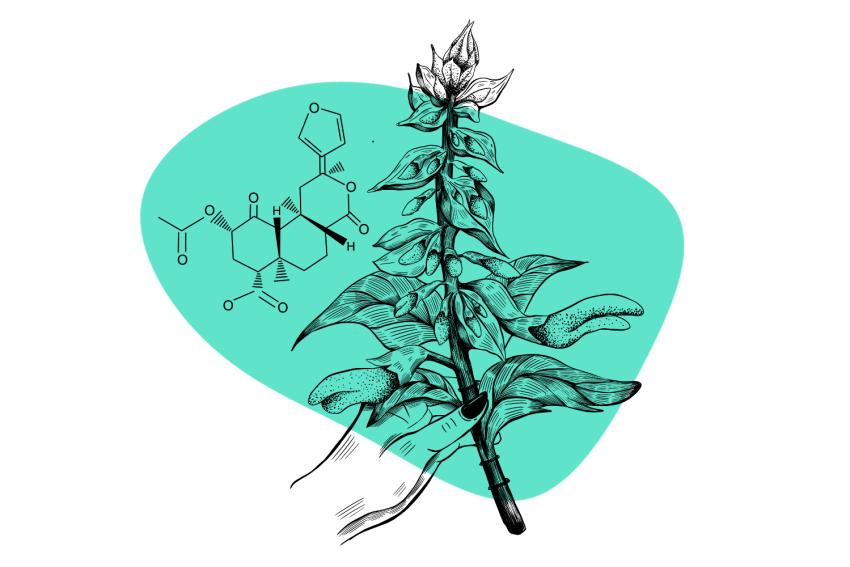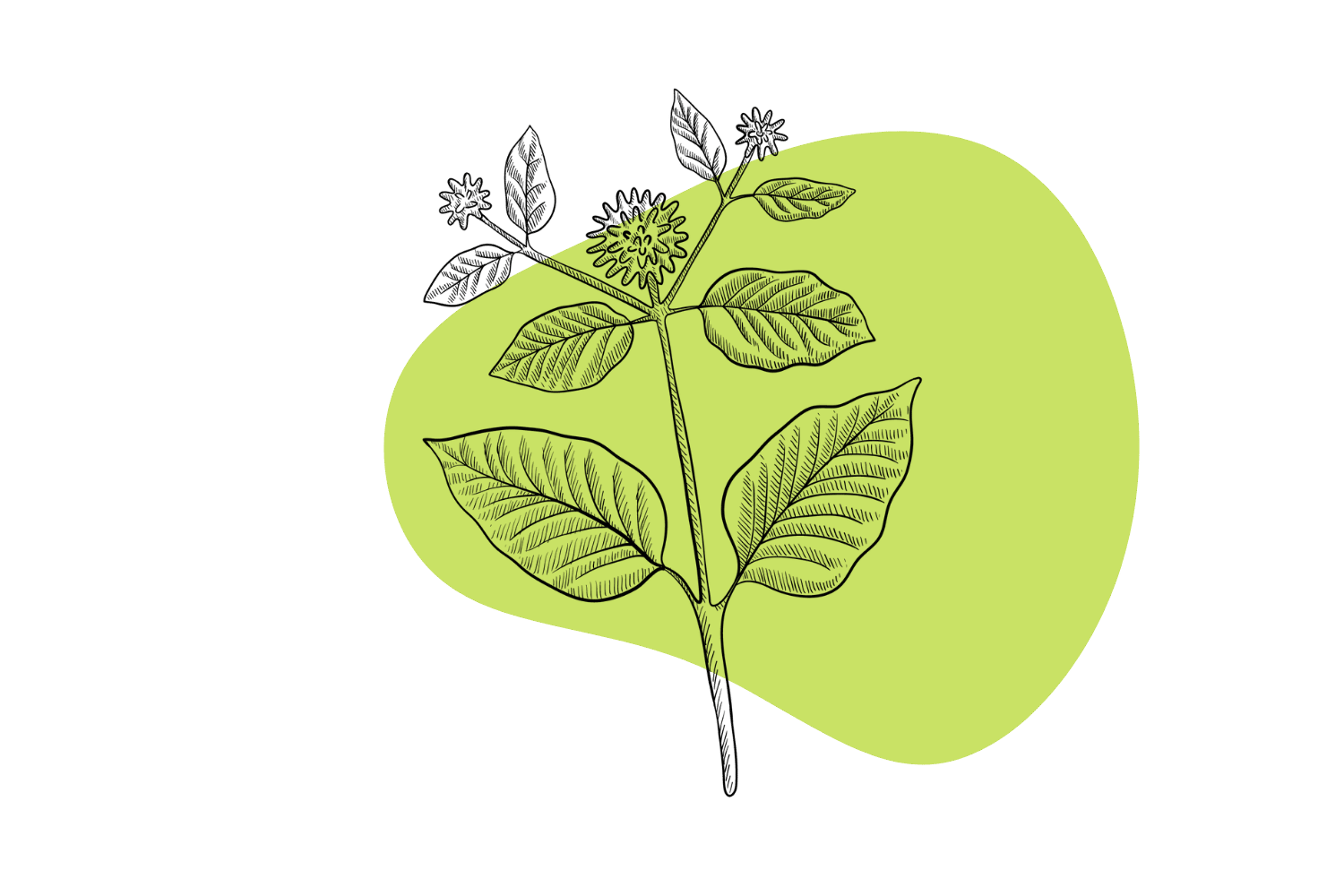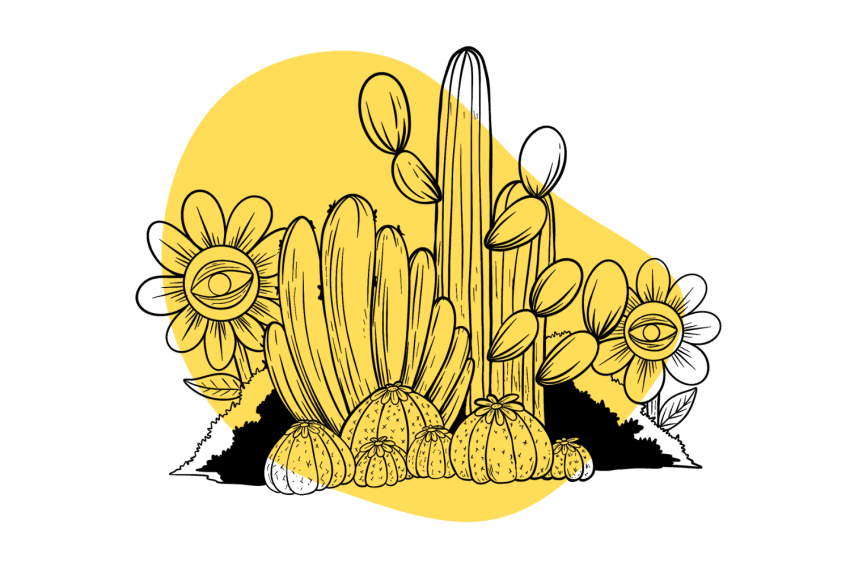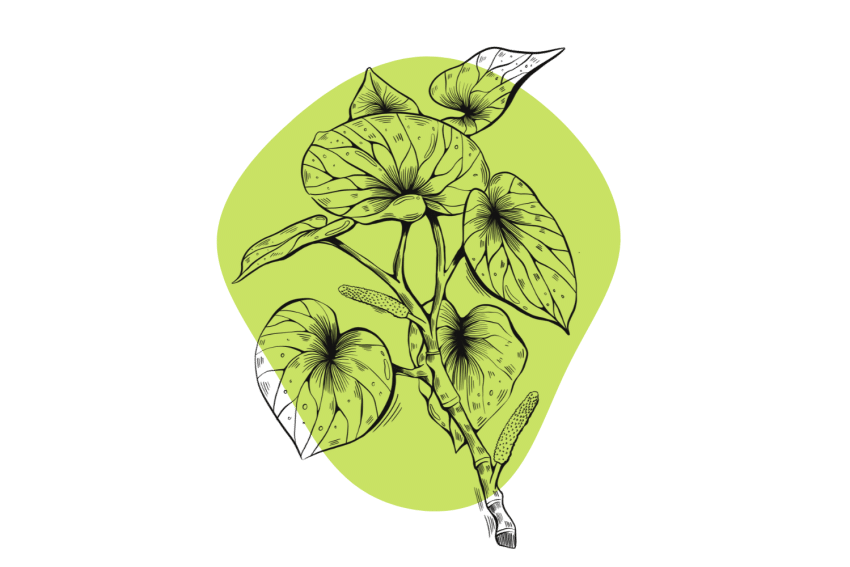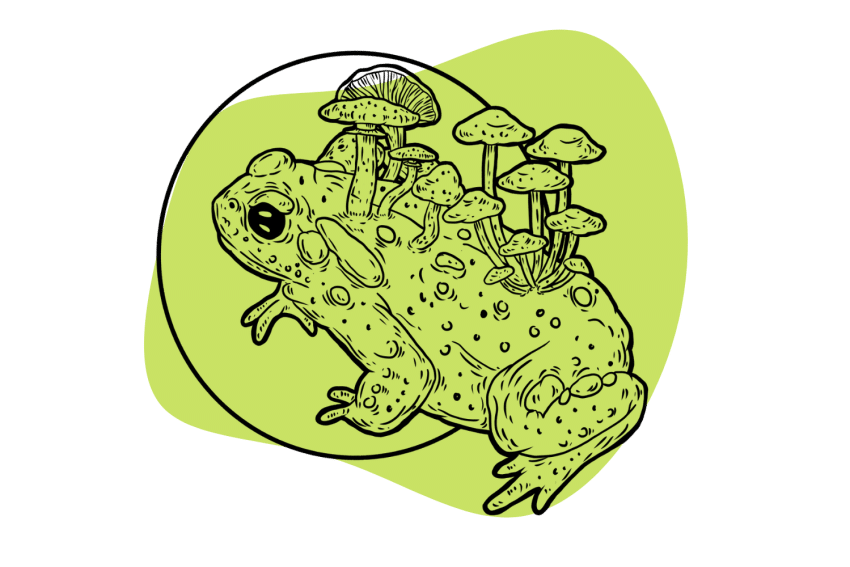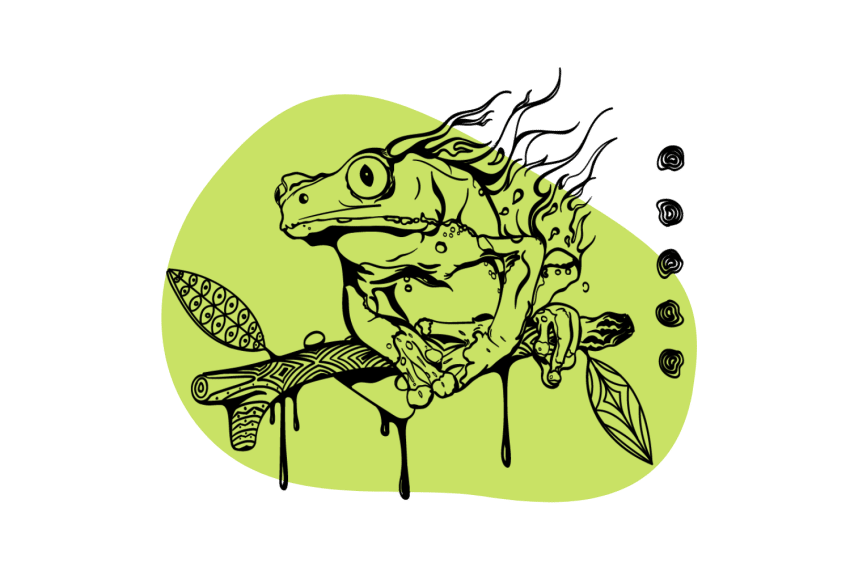What is Psilohuasca? Boosting the Potency of Magic Mushrooms With Ayahuasca
Psilohuasca may increase the potency of mushrooms by as much as 4x. Is there any actual truth to these claims?
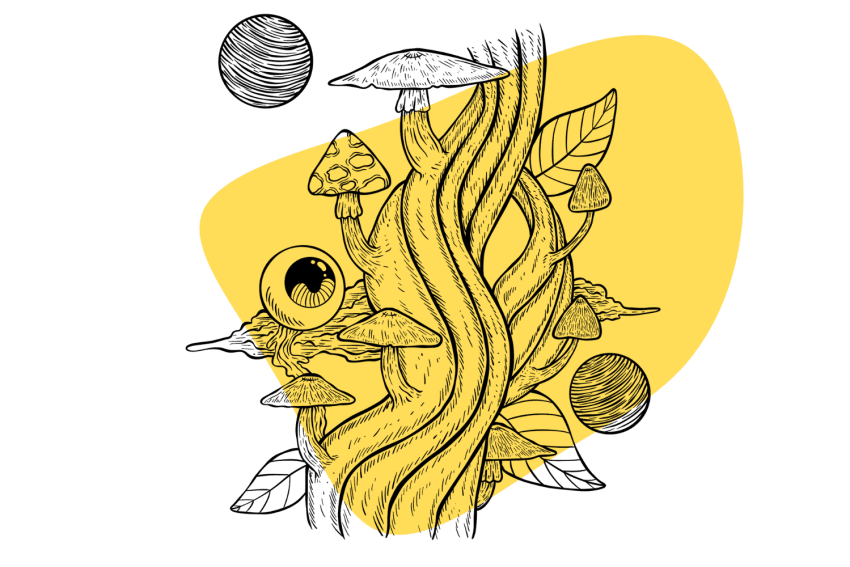
The preparation known as Psilohuasca is starting to make waves in the world — but as is usually the case — there’s little-to-no science on the topic. Short scrolling Reddit for several hours, it’s hard to get a feel for what to expect from the combination.
Anytime you’re putting something into your body, you owe it to yourself to learn as much as possible about it. A practice like Psilohuasca — one where it might not be as common or understood — can be exceptionally difficult.
Here, we’ll examine psilohuasca in detail. We’ll explore what it’s made from, where it comes from, and how to take it responsibly.
What is Psilohuasca?
Psilohuasca refers to the practice of pairing psilocybin-containing mushrooms with a monoamine oxidase inhibitor (MAOI.) The usual ingredients for this are either Banisteriopsis caapi or Peganum harmala. Some use synthetic MAOIs as well (not recommended).
If you’ve ever heard of Ayahuasca, the practice utilizes a similar mechanism of action (hence the name).
“Ayahuasca” is both the name of a brew containing an MAOI and a DMT-rich plant source and the nickname for the MAOI ingredient, Banisteriosis caapi. Without an MAO inhibitor, the monoamine oxidase enzymes in our body would immediately metabolize the DMT from the plants [1].
Through the inhibition of this enzyme, the theory is that the active components of mushrooms — a close relative of DMT — will remain active longer as well.
How Does Psilohuasca Work?
MAO inhibitors contained in the ayahuasca vine, such as harmaline, block the breakdown of psilocin from magic mushrooms. In theory, this enhances the potency of magic mushrooms and prolongs the duration of their effects.
Here’s how this process works.
Psilocin: The Only Edible Form of DMT
Magic mushrooms contain two primary ingredients — psilocybin and psilocin [2]. The only active form is psilocin. After consuming magic mushrooms, your body converts the inactive psilocybin into active psilocin (4-hydroxy-dimethyltryptamine or 4-HO-DMT for short.)
Related: Shroom Science, Understanding the Difference Between Psilocybin and Psilocin
Unlike other tryptamine psychedelics, psilocin’s unique molecular structure enables it to resist deterioration from MAO enzymes. Your metabolism converts other forms of DMT into inactive metabolites, but psilocin has a form that resists that degradation.
Namely, it has a bond between a hydrogen and nitrogen atom at either end of the molecule. The force between the two pulls the ends together and alters the molecule’s shape, folding it in on itself. This creates a barrier that keeps the enzymes from destroying psilocin immediately.
Were it not for this, mushrooms would not be active without using an MAOI as well – just like Ayahuasca. But it seems as though resistance to deterioration from the MAO enzyme is not an absence thereof.
While there is not much research on pairing psilocin and MAOIs, the anecdotal evidence is overwhelming. By many (including our own) subjective impressions, adding an MAOI can enhance the potency of mushrooms by as much as 4x.
Tripsitter Safe Psilohuasca Guidelines
Difficult experiences may happen to anyone at any time for any reason, but there are ways to prepare for and avoid them. If you’re planning to try Psilohuasca, you should first consider the following:
- Set, Setting, Sitter, and Substance — Responsible use is the user’s duty; don’t skip the work.
- Know What You’re In For — Understand the timeline of effects listed above and remember (or write down) the time you first took the drug.
- Understand Dosage — Start low and go slow. You can always take more, but you can never take less.
- Consider a Trip Sitter
- Don’t Mix With Alcohol or Other Drugs
- Know Yourself — If you have underlying psychiatric, cardiac, or other concerns, consider how they’re affected by use.
Terence McKenna & Psilohuasca
Perhaps the most robust account of Psilohuasca comes from none other than the legend himself, Terence McKenna. In his magnum opus True Hallucinations, he takes an Ayahuasca mixture that he no longer believes to have been effective on its own.
Instead, he believes that most of the experience came from mixing the caapi vine with mushrooms he consumed after returning to his tent. Attempting to explain what’s happening, he writes:
The harmine alkaloids [from the caapi vine] present were, in my opinion, boosted by the Psilocybin that had accumulated in our system, or rather the MAO-inhibiting effect of these … caused the residual Psilocybin to emerge into consciousness as a deep hallucinogenic experience.”
Terrance was taking an educated guess, and he was remarkably close – the only problem is that psilocybin doesn’t actually have an effect on its own. Psilocybin is the chemical we typically attribute to magic mushrooms, but it’s not the chemical that makes you trip.
How To Prepare Psilohuasca
Psilohuasca is a two-part process. The first part is the inhibition of your monoamine oxidase enzymes. This requires a natural source, and there are a couple to choose from.
MAOI Sources
Historically, Ayahuasca utilizes the vine of the Banisteriopsis caapi plant, but this is becoming problematic. While we can all appreciate and understand the desire to use the option used in native cultures, when we do, we take away from those cultures.
Banisteriopsis caapi has to live for 5-7 years before growing enough of a vine for workers to harvest it. Even in the most respectful of harvesting practices, that points to a problem if demand surges.
On the other hand, Syrian rue (Peganum harmala) is active in seed form, harvested from living plants that produce large numbers of them. There is no reason to believe they are any less effective than the caapi vine, and they’re much more environmentally friendly.
Preparation Methods
The easiest way to prepare Syrian rue is by simply grinding and eating the seeds. Bear in mind that the taste is not good, and there’s not really a good way to prepare you for exactly how bad it is.
It’s also easy to prepare tea from the rue that we have found to make it less harsh on the stomach. To do this:
- Begin by boiling the seeds in water with a squirt of lemon for 20 minutes.
- Strain the mixture, place the seed material in a pot of fresh water, and repeat the same process.
- Strain out the seed material and mix both batches together.
- Get the liquid to a simmer and allow some of the water to evaporate until you have about a shot glass left. The less liquid you have left, the worse the concoction will taste – have plenty of healthy juices nearby to try and wash the flavor down.
I believe the best descriptor of the flavor you can expect is a warm glass of the aftertaste of vomit. You can always mix it with juice to try and mask the flavor, but I find it best to just get it over with and wash it down.
After you take this, wait at least 45 minutes before you take the mushrooms.
Dosage Recommendations
Syrian rue – 3 g, ground or brewed into a tea
Magic Mushrooms – 0.5–3 g, depending on the desired experience
With all psychedelics, it’s important to start with a low amount and slowly increase it over time. To get an idea of the dose, check out our magic mushroom dosage calculator. However, when making psilohuasca, it’s wise to start with just 25% of a normal dose. Remember that the MAOI makes magic mushrooms approximately 4X as strong.
We also recommend waiting at least three weeks between doses to allow the body time to reset your tolerance. Unlike a lot of other substances, magic mushrooms build up a high tolerance quickly, making abuse of them virtually impossible.
What Does Psilohuasca Feel Like?
Psilohuasca comes on stronger and faster than a typical mushroom trip. The addition of an MAOI increases the element of nausea, as many find that alone to be upsetting on the stomach.
Some even find that nausea from the Syrian rue alone is enough to stop them from being able to take the mushrooms later.
For those that power through, the result is a powerful experience with a “rolling” element and strong visuals. While all psychedelics involve the risk of leading to a negative experience, MAOIs have the additional benefit of being a calming agent of their own.
Permanent MAOIs are available with a prescription to treat depression. The temporary MAOIs available in Syrian rue may also assist with this, helping the user ease into the trip emotionally.
While each journey will be different, they do have some similarities in the form of different stages that most people seem to encounter. The typical experience happens in phases:
Phase 0: Syrian rue (10–20 min)
After taking the Syrian rue, some experience nausea rapidly (within 10-20 minutes), and others don’t. For some, nausea from the rue may hit them at the same time as nausea from the mushrooms.
Ginger tea and CBD are excellent for easing the stomach after taking Syrian rue.
Phase 1: The Come-Up – (0–1.5 hours)
Always prepare yourself for a physically difficult time during the onset of psychedelics. Nausea and an upset stomach are nearly universal experiences among all psychedelics.
Take care to fast for at least 12-24 hours to make the effects less intense – you’re less likely to throw up when you have less in your stomach. During this time, put on some calm tunes, settle into a bed with a lot of blankets, and spend time focusing on your breath.
Remember, the unpleasantness is only the first step, and it’s an initiation into a fuller journey.
Phase 2: The Peak (1.5–5 hours)
Ever seen a movie with a space shuttle launch? The whole way into orbit, everyone feels pulled into their seats by gravity and can barely stand the force. Then, when they break out of orbit, there’s a weightless relief – the astronauts sigh and can relax.
Psychonauts can expect a similar experience when the difficult rise of the come-up completes. Euphoria takes over, body load lifts, and you feel settled into another realm.
Phase 3: Returning to Earth (5–9 hours)
As the effects of the peak begin to wear off, you’ll find yourself gently returning to your realm, your body, and your earth. We took care not to call this one a “come down” because that often has negative connotations – the return to earth is pleasant and enjoyable.
Now that you’ve gotten a view from space, you can return with an altered perspective on the world in which you live.
Pase 4: Afterglow (9–24 hours)
Unlike alcohol, the “hangovers” from psychedelics are often pleasant. For the next day or so, you may find your mood elevated and lingering traces of the euphoria you’ve been experiencing.
Potential Side Effects of Psilohuasca
The come-up can last up to an hour and a half and can feel much more intense than mushrooms on their own.
During the initial onset phase, it’s common to experience the following side effects:
- Anxiety
- Chills/Cold Sweats
- Diarrhea
- Nausea/vomiting
Once things get going and you’ve reached the peak, there are additional risks to consider. Things like:
- Anxiety or Irrational Fears
- Dark or Intrusive Thoughts/Hallucinations
- Unpleasant Emotions
Keep in mind that much of this is avoidable through appropriate preparation before partaking.
Frequently Asked Questions About Psilohuasca
Below are some of the most common questions people may have if they’re starting to consider trying Psilohuasca:
How Long Does Psilohuasca Last?
Unlike mushrooms which typically last 4 to 6 hours, adding an MAOI can push the timeline to between 6 to 9 hours total.
How Strong is Psilohuasca?
Like all psychedelics, the strength of Psilohuasca is dose-dependent, but users can expect the experience to be 2-4x as effective as mushrooms on their own. For reference, I once took 2.5g of mushrooms through a lemon tek along with Syrian rue and had full, peak visuals in 10 minutes.
The benefit of this is up to each psychonaut. For those that would like to venture further into psychedelic space, this can enhance a normal dose by quite a lot. For more casual explorers, Syrian rue adds a fun kick to a “museum” dose of mushrooms and can enhance the experience of smaller amounts.
Is Psilohuasca as Strong as Ayahuasca?
Comparing any psychedelic to another is an exercise in futility. Many describe the two drugs as having differing “feelings,” “lessons,” or “themes,” but that’s far from a scientific understanding.
Since your mindset going into a psychedelic experience shapes so much of what happens, it’s impossible to say whether this is a real or merely perceived effect. The two offer comparable experiences and strengths, according to many.
On the base level, the two are very similar – an MAOI and a source of DMT mixed together. There’s no real way of comparing the two under subjective conditions without a double-blind study.
Is Psilohuasca Safe?
Psilohuasca has an added layer of danger with the addition of an MAOI. Syrian rue in the dosages that someone might use for this is not likely to be dangerous, but it’s still possible that it could be.
MAO enzymes handle a lot more than just breaking down DMT, and some of what they’re responsible for is crucial. The breaking down of tyramine [3] – a compound that can lead to a spike in blood pressure and hypertension – is one of the biggest tasks of these enzymes.
While we’d recommend everyone fast before a Psilohuasca experience, it’s even more important to avoid specific foods and beverages. Aged cheeses, red wines, and more contain high levels of Tyramine and could be dangerous in combination with an MAOI.
This risk is real, but articles frequently overstate how prevalent it is. A large dose of Syrian rue would lead to complications, but it only takes 3g of the seeds to be effective, and there doesn’t seem to be a benefit to higher doses.
Is Psilohuasca Legal?
While Syrian rue is legal in most states, psilocybin-containing mushrooms are not. While this is certain to change in the future, there are places where you can partake of Psilohuasca in (mostly) legal ways today.
In the Netherlands, multiple psilohuasca retreats operate in a gray area legally. While psychedelic mushrooms are illegal in the Netherlands, the ones that grow as truffles (Psilocybe tampanensis) and Syrian Rue (Peganum harmala) are not.
Related: Where Are Magic Mushrooms Legal?
Is There Historical Use of Psilohuasca?
This is up for debate. While there is no documented past use of the combination, that doesn’t mean it’s unlikely. Circumstantially, there is proof that indigenous cultures used both mushrooms and Ayahuasca at similar times in history.
It only makes sense that the combination would have sporadically occurred at some point. While this would have been using the caapi vine, there is no shortage of conjecture about using Syrian rue either.
Some even claim (like the book below) that the iconography at Canterbury Hall [4] representing god as he is creating plants could provide evidence of using mushrooms along with the vine.
Historic use is all conjecture, but it seems possible that it could have played a role in some past ritual for at least one culture. If you’re willing to squint and stretch your definition of “proof,” it might have even happened in the history of Christianity.
While there isn’t any concrete evidence of the traditional usage of psilohuasca as a practice, that’s not always bad. The lack of a past frees the retreats up to create new rituals without a religious, shamanic context.
As one retreat puts it, “Without the separation in a ‘me’ seeing ‘entities’ and ‘spirits’ or the need for a shaman … The true guidance is taking place from within, not from a person guiding.”
Summary: What is Psilohuasca?
Psilohuasca is a practice that many are unaware of, but it’s starting to enter the public spotlight. In the Netherlands, multiple areas offer the ceremony legally using psychedelic truffles and Syrian rue.
As more people are coming to understand the practice, its popularity of it is likely to increase. There’s a huge benefit to the possibility of increasing the potency of mushrooms. It’s not just about people experiencing stronger effects; it’s also nice to be able to consume less mushroom material for the same effect.
Magic mushrooms on their own are extremely powerful, so boosting their potency shouldn’t be taken lightly. Avoid this practice altogether if you’re taking prescription medications or have any underlying conditions or psychiatric disorders.
Should you decide to try Psilohuasca for yourself, follow best practices and take time preparing yourself mentally, emotionally, and physically beforehand. Going into this experience lightly could be a recipe for disaster.
References
- Halberstadt, A. L., Nichols, D. E., & Geyer, M. A. (2012). Behavioral effects of α, α, β, β-tetradeutero-5-MeO-DMT in rats: comparison with 5-MeO-DMT administered in combination with a monoamine oxidase inhibitor. Psychopharmacology, 221(4), 709-718.
- Lee, H. M., & Roth, B. L. (2012). Hallucinogen actions on human brain revealed. Proceedings of the National Academy of Sciences, 109(6), 1820-1821.
- Burns, C., & Kidron, A. (2020). Biochemistry, Tyramine. In StatPearls [Internet]. StatPearls Publishing.
- Brown, J. B., & Brown, J. M. (2019). Entheogens in Christian art: Wasson, Allegro, and the Psychedelic Gospels. Journal of Psychedelic Studies, 3(2), 142-163.

